
Review on 🍱 Prep Naturals Glass Meal Prep Containers 3 Compartment 5 Pack - Bento Box Containers Glass Food Storage Containers with Lids - Food Prep Containers Glass Storage Containers with Lids Lunch Containers: Organize and Store Your Meals Hassle-Free by William Rothstein

Very good containers. Robust and easy to care for.
After reading the reviews that gave me vague/ambiguous answers before purchasing these containers, I decided to buy them and see what was going on for myself. After reviewing and using them, I will do my best to provide clear answers to clear up any confusion from other potential buyers. See photos in my review for reference. I've captioned each photo with a letter so you can 'see' what I'm talking about. QUESTION: Some reviews say containers leak, some don't. What is the correct answer? - ANSWER: Yes and no. The compartments themselves are solid, but there is a small gap between the edges of the compartments and the container lid. If you look at photo A you will see that I am pointing to the edges that are too low to touch the lid. If the container is turned on its side, turned upside down or shaken, the small gap will cause liquids to seep or spill between this low spot and into other compartments. This is the "leak" people have been talking about. However, with the lid closed, there is no spilling/leakage on the OUTSIDE of the container; everything is kept in it. - QUESTION: Is there a way to prevent leaks? - MY ANSWER: Yes. I used food grade silicone caulk (sold separately and cheaply) to draw a small caulk line along the edges shown in Photo A. After the gasket dried, it functioned as a full barrier between the rim and the lid - so there was no slosh between the gaps. - QUESTION : Do the compartments themselves leak into each other? - MY ANSWER: No. gaps between subjects. Your walls are strong. In photo B you can see that I put 3 different colored liquids in each compartment, each at different levels so you can clearly see that they are blocked. There is no mixing or leaching of liquids between the walls of the compartment itself. - QUESTION: Is it difficult to close container lids? - MY ANSWER: Yes and no. First you need to make sure that the gasket, like any gasket cap, is fully seated in the groove. Then there's a special trick to getting the lids on properly: the tabs should be lifted outwards, almost to the level of the rest of the lid. You can see this in photo C. After the flaps have straightened out, place the lid on the container and then simultaneously push up on the opposing flaps until they snap into place. If the flaps don't even touch the lid when you try to push it down, you'll have a hard time closing it. they do not go, or the lid begins to open slightly. However, once the lid is secured, it is securely fastened and will not slip or leak. - QUESTION: Do the lid seals fall out? - MY ANSWER: Unless the seal is legally broken (half broken), the seal is supposed to be removable. You can see this in photo D. This removal allows you to clean the lid groove and clean/sanitize the seal (otherwise bacteria and/or mold will grow if food gets underneath and it has never been washed; this is a fact for any product with this type of seal). Once the gasket is dry, you can use your fingertips to push it back into the groove. Make sure it is firmly and fully seated in the groove or you will have trouble snapping the lid into place, again this applies to any product with such a lid.
- Like all before
- Band
New products
Comments (0)
Top products in 🍴 Kitchen Storage & Organization
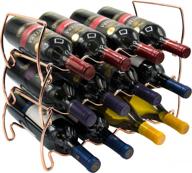
Sorbus® 3-Tier Stackable Wine Rack - Classic Style Wine Racks For Bottles - Perfect For Bar, Wine Cellar, Basement, Cabinet, Pantry, Etc - Hold 12 Bottles, Metal (Copper)

34 Review

Preserve Fresh Herbs With Prepara Herb Savor Pod 2.0

45 Review
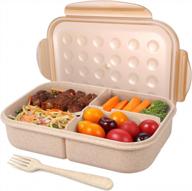
3 Compartment Lunch Box Bento Box For Adults, Kids Food Containers With Flatware Included - Leak Proof Microwave Safe (Champagne)

32 Review
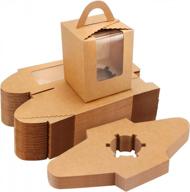
EUSOAR Cupcake Boxes Kraft Paper, 50Pcs Portable Single Individual Paper Cupcake Holder Containers ,Muffin Gift Boxes With Window Inserts Handle, For Wedding Birthday Party Candy Boxes

33 Review
Another interesting products
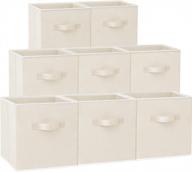
Organize Your Home With 11-Inch Beige Storage Cubes: Set Of 8 Fabric Collapsible Bins With Dual Handles!

29 Review
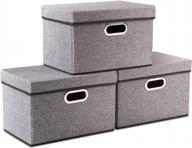
Set Of 3 PRANDOM Foldable Linen Fabric Storage Boxes With Lids - Collapsible Bins For Home, Office, Closet, Nursery - Organizer Containers With Covers (14.9X9.8X9.8 Inches)

28 Review
![terraking leaf bag xl - heavy duty material collection system for ride-on lawnmowers - fast & easy leaf collection with nylon bottom (fits 3-bag hood) [st95033] logo](https://images.revain.org/blob/rog5xubi_5b5cf8d428@128x128.jpg)
TerraKing Leaf Bag XL - Heavy Duty Material Collection System For Ride-On Lawnmowers - Fast & Easy Leaf Collection With Nylon Bottom (Fits 3-Bag Hood) [ST95033]

31 Review
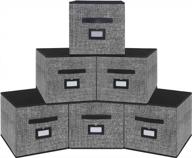
6 Pack Black Cloth Storage Bins With Leather Handles And Label Holders - Foldable Cubes Organizer Container Basket Drawers For Bedroom Closet Toys Cubby Bookcase, 10.5"X10.5"X11", MXABS06PLP

51 Review

